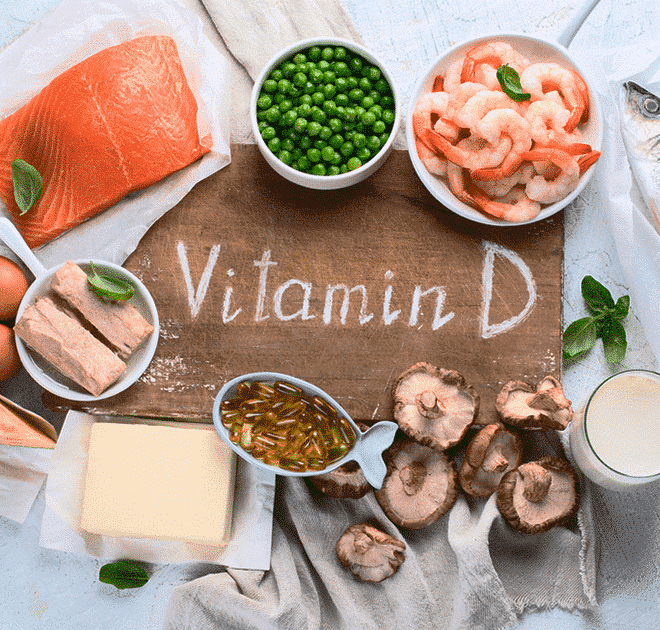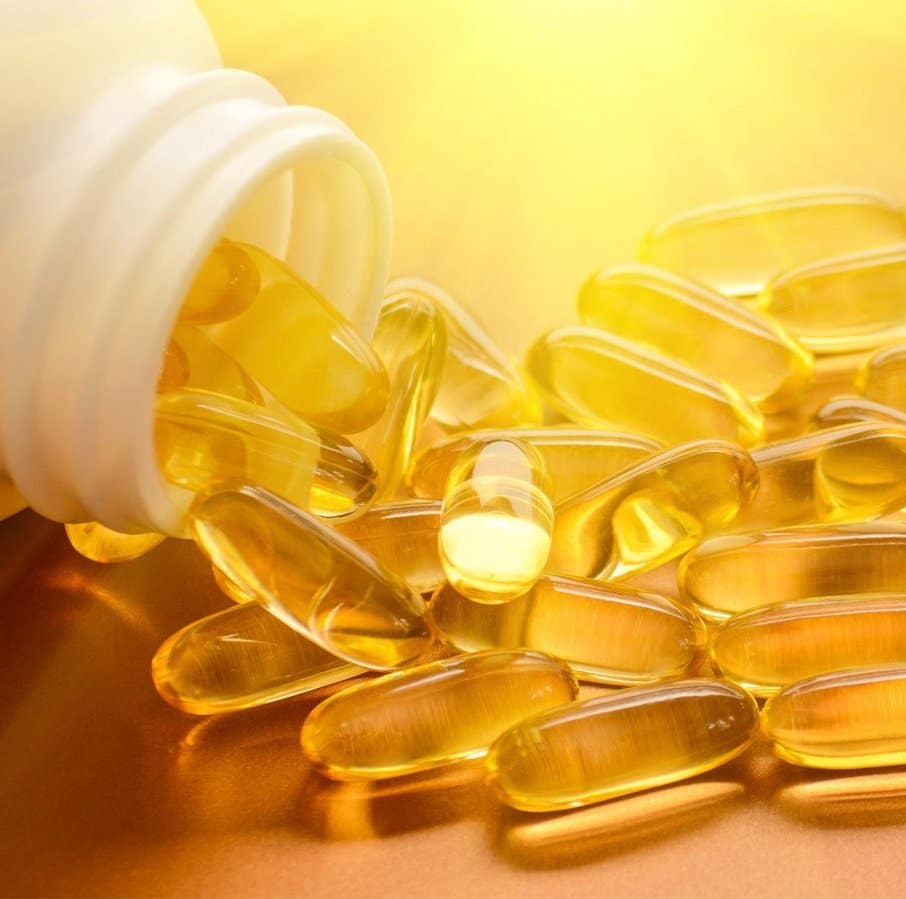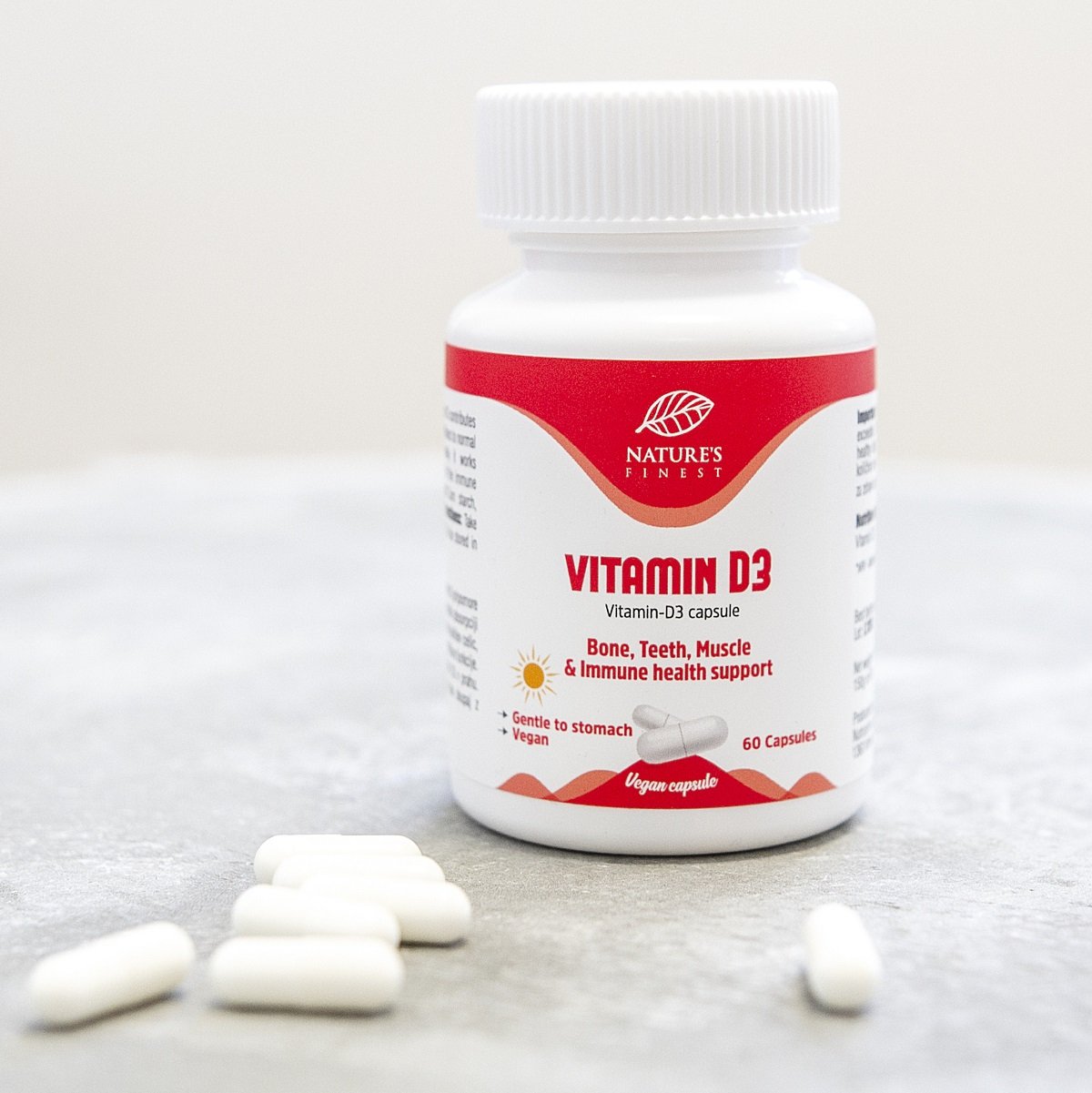Vitamin D deficiency?
Let’s get to know vitamin D and its benefits
Vitamin D includes vitamins D-1, D-2, and D-3, but exists in only two forms: as vitamin D2 (ergocalciferol) and vitamin D3 (cholecalciferol). It is also known as the “sunshine vitamin” because our body produces it from cholesterol when the skin is exposed to sunlight. This fat-soluble vitamin has several important functions in the body. The most important are the regulation of the intestinal absorption of calcium and phosphorus and supporting the normal functioning of the immune system. We also know many other functions:
- promotes muscle health
- supports the cell growth
- reducing inflammation, which helps prevent diseases such as rheumatoid arthritis and psoriasis
- regulates blood pressure
- supports cardiovascular health
As the poor intake of vitamin D could pose a health risk, there are two ongoing researches in Slovenia. The results have already provided several answers to some key questions. This area was researched in the national NUTRIHEALTH research, and it continues within the research project “Challenges of achieving adequate vitamin D supply”, which is led by the Institute of Nutrition. Preliminary results suggest that vitamin D supply is even worse this year than last.
Vitamin D deficiency in as many as 80% of Slovenians
The question “How is the vitamin D supply in the population of Slovenia?” was answered within the national research NUTRIHEALTH by prof. dr. Igor Pravst, Institute of Nutrition, head of the Nutrihealth research: »In the study, we determined vitamin D supply by analysing blood samples in 280 adults between 18 and 74 years of age. We found huge differences in the supply of vitamin D in the adult population of Slovenia in different seasons. Between November and April, as many as 80% of adults were insufficiently supplied with vitamin D, and almost 40% were even severely deficient. Results were even more alarming if evaluated according to the stricter recommendations of the International Association of Endocrinology, which show that less than 5% of adults were optimally supplied with vitamin D during the winter.«
Natural sources of vitamin D
Vitamin D is produced in the skin with the help of the sunlight. The amount of sunlight required to synthesize adequate amounts of vitamin D varies depending on a person’s age, skin colour, sun exposure, and possible health problems. Vitamin D production decreases with age. In addition, only the sun exposure, especially during the winter months, cannot provide the body with sufficient levels of the vitamin. Another important source of vitamin D is food, where it occurs naturally, but still not enough.
In a balanced diet, the most important sources of vitamin D are mainly various foods of animal origin, e.g. fish, eggs, milk and dairy products, and plant-based products contain it mainly if enriched. Therefore, with regular consumption of these foods, as often and as much as recommended, an individual can contribute to a better supply of vitamin D. Manufacturers also add this vitamin to certain foods, most often breakfast cereals, various spreads and beverages, which is also indicated on the label. Similarly, for dietary supplements, the amount of vitamin D added must be labelled. Prof. dr. Igor Pravst, Institute of Nutrition says: »According to the European legislation on food labelling, food or dietary supplement containing 5 µg of vitamin D may label that it contains 100% of the recommended daily intake of this vitamin. Reference values for the daily supply of vitamin D are higher (15 or 20 µg), so some food or dietary supplement manufacturers often include adjusted doses, which they label as e.g. 300% or even more of the recommended daily intake. Taking into account the scientific opinion of the European Food Safety Authority, such doses do not usually pose a health risk, and a safe daily intake of vitamin D from all sources for healthy adults is up to 100 µg.«

Vitamin D deficiency is becoming even more common.

During the summer, with normal exposure to UVB rays, most people are supplied with vitamin D, while in our geographical area during autumn and winter we depend mainly on dietary intake of vitamin D. Few foods are naturally rich in this vitamin, which makes vitamin D in autumn and winter one of the most frequently used dietary supplements.
However, the problem with vitamin D deficiency is not only present in autumn and winter. It is also present in the summer months, as we mostly fail to supply the lost vitamin D, which we process throughout the year (October to April) if we don’t take it.
Vitamin D deficiency at-risk groups include: pregnant and breastfeeding mothers, older people especially over the age of 70, infants and children under the age of 5, people with darker skin, and those with very little sun exposure.
Vitamin D deficiency can occur because of various reasons
- Not enough vitamin D is taken with the diet
- Not enough absorbed vitamin D from the food (malabsorption problem)
- Less exposure to sunlight
- The liver or kidneys cannot convert vitamin D to its active form
- Some medicines affect the body’s ability to convert or absorb vitamin D
What are the most common symptoms of vitamin D deficiency?
- Frequent infections and weak immune system
- Mood swings
- Decreased calcium levels
- Weight gain
- Bone loss and fractures
- Bones and joint pain
- Muscle cramps and weakness
- Exhaustion and general fatigue
..which can also lead to more serious problems and diseases:
- Asthma
- Diabetes
- Cardiovascular diseases (high blood pressure and/or congestive heart failure)
- Osteoporosis and/or osteopenia
- Autoimmune diseases
- Chronic fatigue syndrome
- Allergies
- Skin diseases (dermatitis, eczema, ..)
Vitamin D deficiency is manifested, among other things, in poorer natural resistance (innate immunity) against acute (viral) respiratory infections. In the virus season, experts point out that vitamin D, if we have enough of it, can alleviate or alter the course of the disease by calming excessive inflammation in the lungs. Prof. dr. Marija Pfeifer, Ph.D. med., specialist internist, endocrinologist, President of the Association of Endocrinologists of Slovenia at the SZD: »Due to more and more data on the beneficial effects of vitamin D on reducing the incidence of viral respiratory infections, at the initiative of my colleagues, ID physicians, few days ago we prepared Recommendations for vitamin D replacement. In Slovenia, an Expert Group for the preparation of the national guidelines for the supply of vitamin D was established at the end of last year, which I lead. We plan to present the comprehensive national guidelines next year.«
The current situation has forced some members of the group to prepare interim guidance for mitigation purposes. They say: »Based on data on the extremely high prevalence of severe vitamin D deficiency in the Slovenian population in late autumn and winter, we advise the replacement of vitamin D3 for preventive purposes.«
In the summer, the body’s need for vitamin D can be obtained with a short moderate sunlight exposure, and in the autumn and winter, the key source is diet. However, many people ask themselves, what amount of this vitamin should be consumed?

How much vitamin D do we need?
The amount of vitamin D you need per day depends on your age and condition. Recommendations for the replacement of cholecalciferol (D3) in certain periods:
In healthy adults, the recommended daily amount of vitamin D3, from the beginning of October to the end of March is 800 – 2,000 IU. In at-risk groups, chronic patients and the elderly recommended daily dose is 1,000 – 2,000 IU throughout the year. Pregnant and breastfeeding mothers are also advised to daily take 1500 – 2000 IU of vitamin D. If in doubt, you can also test your values before supplementing. For children up to 1 year, the recommended dose is 400 – 1000 IU per day, and from 1-18 years 600 – 1000 IU per day. If viruses are already present, vitamin D intake may be increased. The recommended dose during this period is 14,000 IU 4 days in a row, if you have not taken enough vitamin D before, then continue with 2,000 IU daily.
*IU – international units, 1000 IU = 25mcg of cholecalciferol
*NIJZ 2013; taken from D-A-CH: New Reference Values for Vitamin D. Ann Nutr Metab 2012; 60: 241–246
*Holick M et al. Evaluation, Treatment, and Prevention of Vitamin Deficiency: an Endocrine Society Clinical Practice Guideline, J Clin Endocrinol Metab 2011; 96: 1911 – 1930
With sun exposure, we can get about 10,000 IU of vitamin D (or more). In 2012 study, medical experts confirmed that by consuming 5,000 IU of vitamin D daily, for 3 months, we can overcome the vitamin D deficiency and increase vitamin D levels in the blood.
Make sure you get enough vitamin D3!